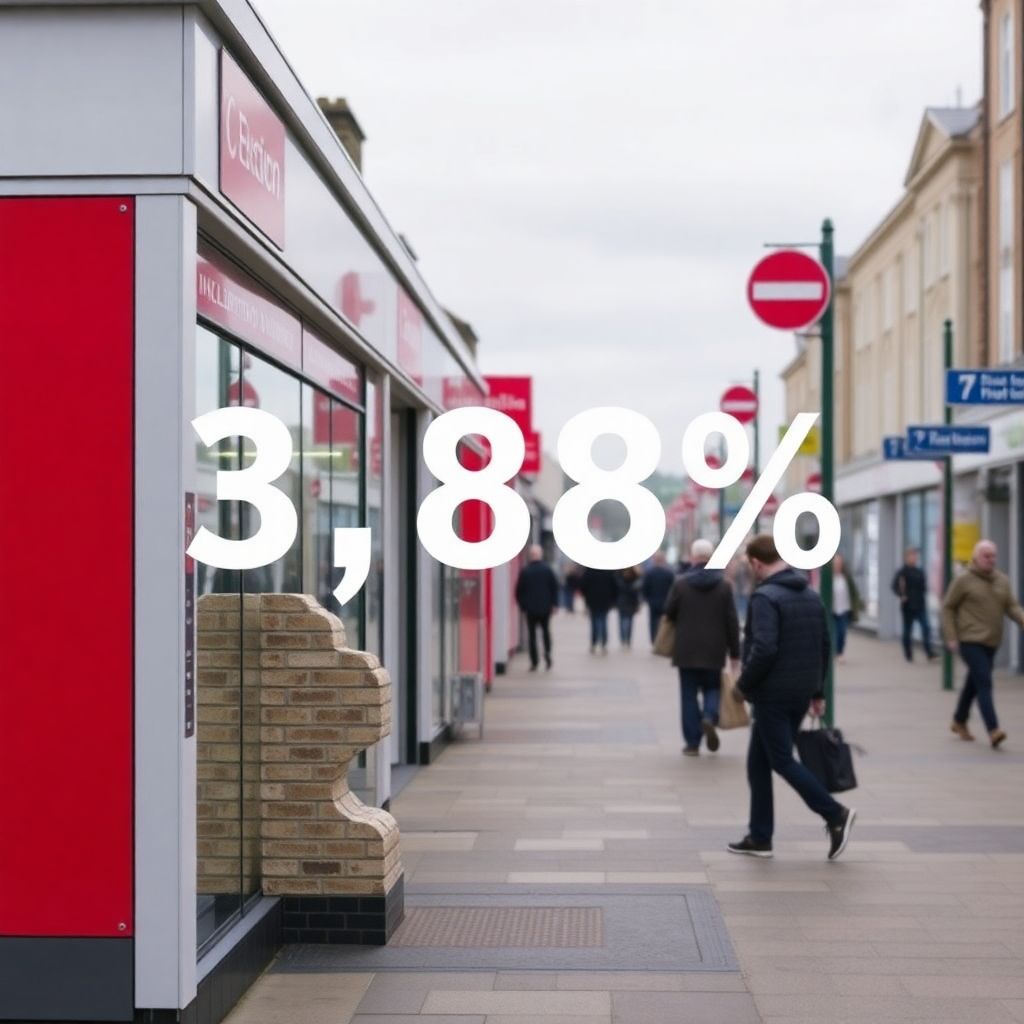What Does the Delay in UK Interest Rate Cuts Mean as Inflation Holds at 3.8% in September?
The UK’s inflation rate remained unchanged at 3.8% in September, marking the third month in a row with no significant movement. While this figure is below the Bank of England’s (BoE) previously anticipated peak of 4%, it still stands nearly double the central bank’s long-term target of 2%. The stagnation in inflation suggests the battle to tame rising prices is far from over, complicating the BoE’s decision-making process on whether and when to reduce interest rates.
Core inflation, which excludes volatile components such as energy, food, alcohol, and tobacco, ticked slightly lower to 3.5% from 3.6% in August. However, the underlying trend remains persistent. Significant contributors to the current inflation include fuel and airfare, which, while having eased from their peaks last year, continue to exert upward pressure. On the flip side, modest declines in prices for food, non-alcoholic drinks, and recreational services have provided some relief. Still, the overall inflationary trend remains sticky.
This environment of slow disinflation is further complicated by the UK’s sluggish economic performance. August’s GDP growth of just 0.1% highlights the fragile state of the economy. Weak overall growth paired with persistent inflation—known as stagflation—presents a major challenge for policymakers. The BoE must weigh the risks of acting too soon with a rate cut, potentially reigniting inflation, against the dangers of keeping rates too high and further stifling growth.
Economists remain cautious. George Brown, a senior economist at Schroders, warns that inflation risks becoming entrenched due to ongoing productivity issues and steady wage growth. He predicts the BoE will likely maintain current interest rates through to the end of 2026, even suggesting the next policy shift could be another rate hike, rather than a cut.
Market expectations have also adjusted in light of the data. While earlier in the year a November interest rate reduction seemed plausible, those hopes have mostly evaporated. December is now seen as the earliest possible window for a cut, although many experts remain skeptical. Matthew Ryan, head of market strategy at Ebury, suggests that even a February cut could be too optimistic if inflation remains elevated.
For the cryptocurrency market, the implications are significant. The combination of prolonged high interest rates and persistent inflation contributes to economic uncertainty, a major driver of crypto market volatility. Investors in digital assets are particularly sensitive to macroeconomic signals, and the current data could continue to unsettle sentiment.
Recent geopolitical tensions and policy changes have only added fuel to the fire. The announcement of a 100% tariff on Chinese imports by Donald Trump sparked widespread fear, triggering a sharp sell-off across crypto markets. Within hours, nearly $19 billion in leveraged positions were liquidated, and major cryptocurrencies like Ethereum and numerous altcoins suffered steep declines.
In the broader global context, the U.S. economy is also grappling with similar challenges: higher-than-expected inflation, a protracted government shutdown, and continuous supply chain disruptions. This creates a ripple effect across global financial markets, including crypto, amplifying investor caution and market unpredictability.
However, not all outcomes are negative. In times of financial turbulence, Bitcoin and other well-established cryptocurrencies often attract capital as digital safe-haven assets. With traditional markets facing headwinds and uncertainty clouding fiat currencies, institutional and retail investors alike may increasingly turn to Bitcoin for stability. Meanwhile, smaller altcoins, lacking the same level of trust and infrastructure, remain vulnerable to sharp sell-offs.
From a policy perspective, the BoE’s next moves will be closely scrutinized by both traditional and crypto investors. Any indication of a shift in interest rate direction could trigger immediate reactions in digital asset prices. Until then, market participants are likely to remain cautious, awaiting clear signals from central banks.
In addition to macroeconomic trends, regulatory developments in the UK also play a crucial role. The government has recently taken steps toward regulating stablecoins and bringing more clarity to crypto asset classifications. While this could eventually lend credibility and structure to the market, in the short term, it adds another layer of uncertainty for investors.
Looking ahead, several key factors will shape the crypto market’s reaction to the UK’s economic trajectory:
1. Wage Growth: If wages continue to rise faster than productivity, inflation could remain stubbornly high, forcing the BoE to keep rates elevated, which may suppress risk appetite in crypto markets.
2. Consumer Spending: Any signs of weakening consumer demand could indicate economic slowdown, potentially increasing interest in deflationary assets like Bitcoin.
3. Regulatory Clarity: As UK regulators finalize their approach to digital assets, clearer rules could bolster investor confidence and institutional involvement.
4. Global Central Bank Policies: The actions of the U.S. Federal Reserve, the European Central Bank, and others will also influence market sentiment, particularly when it comes to cross-border capital flows into crypto.
5. Institutional Adoption: Despite volatility, institutional interest in Bitcoin and other cryptocurrencies remains significant. Any easing of monetary policy could reignite bullish sentiment among large-scale investors.
6. Technological Developments: Innovations in DeFi and blockchain infrastructure could provide new narratives for crypto growth, regardless of short-term macroeconomic pressures.
7. Retail Participation: The return of retail investors, particularly during bullish periods, can drive sharp price increases. However, this also makes the market more sensitive to negative news.
In summary, the UK’s inflation data and the BoE’s cautious stance signal that interest rate cuts are unlikely in the immediate future. This delay, coupled with broader global economic uncertainty, may continue to fuel volatility in the crypto space. While established digital assets might benefit from safe-haven flows, altcoins and speculative tokens could face additional headwinds. Investors should prepare for a prolonged period of uncertainty, with both risks and opportunities on the horizon.

